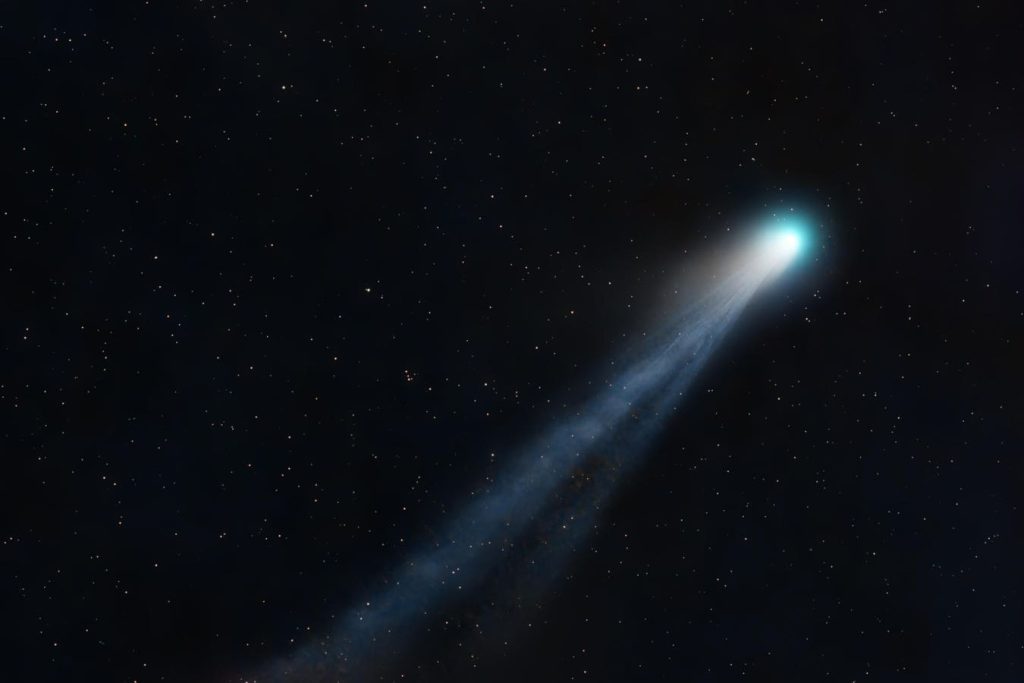This week in April is an excellent time for stargazing in North America as some of the bright stars of winter, such as those in Orion, Gemini, and Taurus, are visible in the west. Additionally, Jupiter and a passing comet, 12/P Pons-Brooks, will be highlights in the night sky. The comet will be reaching its brightest this week, so make sure to catch a glimpse before it disappears.
On Monday, April 15, the First Quarter Moon will be in Gemini. This is when the moon appears half-lit from Earth. Look south to see the half-lit moon alongside the bright star Pollux in Gemini. Castor, the other of the “twins” of Gemini, will be visible above. Both Pollux and Castor are situated a significant distance away from our solar system.
Thursday, April 18 will feature the waxing gibbous moon shining near Regulus, the brightest star in the Leo constellation. Regulus is known as the “star of the Lion’s breast” and is one of the brightest stars in the night sky. The moon will be 80% illuminated, making it a beautiful sight to behold.
On Saturday, April 20, Jupiter and Uranus will be in conjunction, appearing close together with just 30 arc minutes between them. Uranus, known as the “bulls-eye planet,” will be significantly dimmer and may require binoculars to observe. Comet Pons-Brooks will also be nearby for those looking to catch a glimpse of it.
Finally, on Sunday, April 21, Comet Pons-Brooks will be at its brightest for the month. This comet, similar in size to Halley’s Comet, has been visible in the west after dark all month but will soon be sinking towards the horizon. Make sure to have clear skies and a good view low to the southwest, along with a pair of binoculars for the best chance to see it.
This week’s constellation is Leo, easily identifiable by its cluster of bright stars that form the shape of a lion. Look for Regulus at one of the lion’s front paws and Denebola at the end of its tail. Both stars are relatively close to our sun. Wolf 359, a red dwarf star in the Leo constellation, is one of the closest stars to us at just 7.9 light years away.
For the most accurate location-specific information, consult online planetariums like Stellarium and The Sky Live for details on planet-rise/planet-set, sunrise/sunset, and moonrise/moonset times for your area. Enjoy clear skies and wide eyes as you explore the wonders of the night sky this week.













